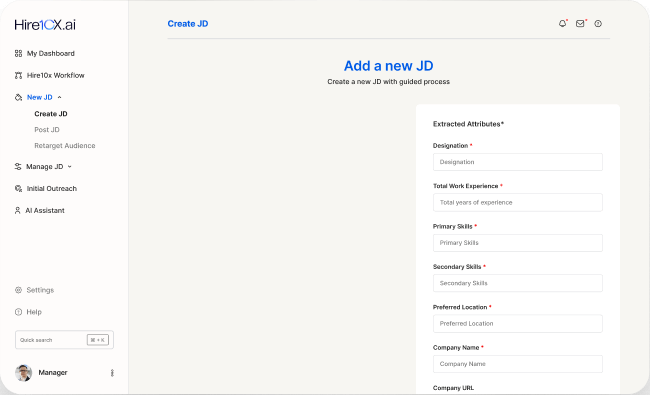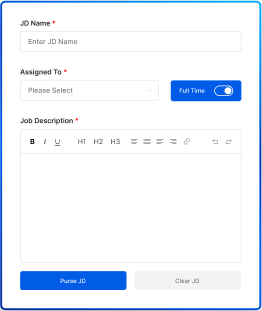AI Magic for Unstoppable Business Growth
Dive into the future of recruitment and lead generation with our advanced AI platforms
Products
Our cutting-edge platforms are designed to seamlessly optimize and automate your workflows, delivering holistic, end-to-end solutions that empower you to achieve exceptional results with minimal effort. Dive into the future of business efficiency and let 10xScale propel your success to new heights.



Key Features
- Inbound and Outbound Sourcing
- Advanced ATS and Custom Hiring Pipelines
- AI Ranking, Matching, and Smart Outreach
- Comprehensive Analytics & Reporting
See the Transformation with 10xScale
Experience the Difference Content: Witness the remarkable transformation that 10xScale brings to your business processes. Our AI-driven solutions streamline and enhance every aspect of recruitment and lead generation, turning challenges into opportunities and inefficiencies into streamlined operations.
Before 10xScale
Manual Processes: Time-consuming and error-prone recruitment and lead generation tasks.
Limited Reach: Struggles to find and engage the right candidates and leads.
Inefficient Pipelines: Disorganized and inflexible management of hiring and lead generation processes.
Lack of Insights: Minimal data and insights to inform decision-making.
After 10xScale
AI Workflows: Seamless in-depth second level of automation using AI features and assistance for recruitment and lead generation processes.
Expanded Reach: Effortlessly source and engage top talent and high-quality leads.
Optimized Pipelines: Flexible, organized pipelines for managing candidates and leads.
Data-Driven Insights: Powerful analytics and reporting for informed decision-making.

AI Capabilities
Our AI technology is at the core of our products, enabling smarter, faster, and more efficient business operations.
Learn about the AI capabilities that power Hire10x and Leads10x.

WHY 10X
Why Choose us
10x
Faster leads generation
aiding you in faster conversions
70%
Cost saving
on hiring costs, optimizing your lead generation efforts.
70%
Reduce hire time
with our AI-powered automation.
3x
times quality hire
with our AI-powered automation.
